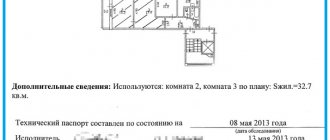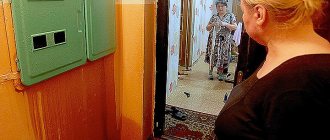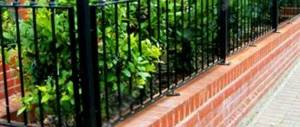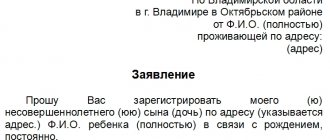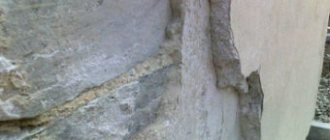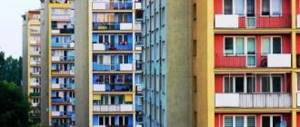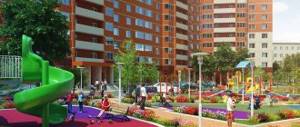Home / Conflict with neighbors / Consent to install a fence between neighbors - sample
Installing a fence between neighbors involves not only the direct installation of fencing structures, but also the preliminary obtaining of permits from government agencies. Sometimes it will also be necessary to document the planned parameters of the future fencing with the owners of adjacent plots. In what cases is it necessary to draw up a document and what features should be taken into account when drawing it up?
Regulatory requirements
To decide whether you need to obtain consent from your neighbors to install a fence, you need to know the requirements for such structures and how much they will be violated in your case.
The procedure for the construction of various types of structures is determined by the provisions of the following regulations:
- For SNT - SP 53.13330.2011 . But in the current edition there are no standards regarding the characteristics of the fence: height (previously this parameter was 1.5 m), transparency, etc. The only recommendation concerns the installation of mesh fences around the perimeter of the site (clause 6.2), which can be replaced by any other type of fence by agreement with the owners of neighboring plots, certified by the board of the gardening or dacha association. The latter also have the right to establish more precise parameters for their territory (height, transparency), which are fixed in the Charter and are mandatory for the owners of all plots located on the territory of the partnership or cooperative.
- For individual housing construction - SP 30-102-99 . Here, too, there are still no general recommendations regarding the parameters of fencing. But they can be established by local governments of the settlements on whose territory the site is located. The necessary information can be obtained from the General Plan and the Land Use and Development Rules (LRU) of a particular municipality. You can find out the standards on the official portal of the authorities or through a written request to the administration. The response is provided in the same form within 30 days.
If the partnership documents or PZZ do not contain any restrictions on the parameters of fences between neighbors (which is also possible), theoretically, you can install any fence, even a 3-meter fence, on your property, without coordination with your neighbors.
But since the structure itself can in one way or another affect the neighboring territory, for example, create a shadow, reduce the area of the site (if the fence is large), it is still advisable to discuss the planned characteristics of the object with the owners of adjacent plots and record the agreements in the appropriate document. This will avoid possible conflict situations and maintain good relations with neighbors. A similar document must be drawn up if the characteristics of transparency and height of the fence differ from the requirements of the local administration or the Charter of the partnership.
Expert opinion
Semyon Frolov
Lawyer. 7 years of experience. Specialization: family, inheritance, housing law.
Laws do not have retroactive effect. If new standards are approved, they will not apply to previously installed fences. In this case, it is important for the owner to prove that the structure appeared on the site before the adoption of the new regulatory act. This can be done with the help of documents that indicate the date of installation of the fence (for example, an installation agreement, a certificate of completion, etc.)
Attics - life under a roof
Obtain permission to install an attic space in a multi-storey building, i.e. above your apartment, located on the top floor, is quite difficult. But lately there have been many houses equipped with an attic instead of an attic.
- Application for permission to re-equip the attic space, submitted to the authorized body of the executive committee.
- Documents establishing the right to the site subject to reconstruction. There are two ways to add an unused part of the attic to your living space - by registering ownership of part of the attic, or without registration (possible rent, free use).
- Reconstruction work plan.
- Additional documents contained in the project: explanatory note, diagram of the facility, taking into account the location of passages and approaches to it, boundaries, information about engineering equipment, communications and their connection points.
- Final examination of design documentation .
- Permission to deviate from existing construction parameters.
- Permission to carry out work to preserve cultural heritage (if available).
- Minutes of the general meeting of residents living in an apartment building with their consent.
Procedure
To draw up documents confirming agreement with neighbors on the selected fence design, you need to follow the following procedure:
- Find out the requirements for fences and barriers depending on the location of the land plot. To do this, you need to contact the management of the partnership or the local administration.
- Determine the boundaries of your site according to the boundary plan, within which the fence should be installed. This will allow you to clearly see where your own land ends and your neighbor’s begins. If necessary, you need to order land surveying.
- Discuss with your neighbors all the parameters of the future design: exact location (can be marked with pegs), height, material, transparency. Perhaps they will make other proposals that will suit both sides.
- Record the agreements reached in writing.
If a fence needs to be installed on the border of two or three adjacent plots, then the appropriate number of agreements should be drawn up.
Once consent to install a fence between neighbors has been issued, you can begin to obtain a building permit from the architectural or urban planning department of the municipality. The presence of this document will protect the owner of the site from administrative liability for illegally constructed objects or requirements for dismantling the structure.
We recommend reading:
- Distance from the bathhouse to the fence and neighbors' house
- Distance from tree to neighbor's fence
When do you need permission?
The need to obtain the consent of the neighbors of an apartment building, in accordance with Chapter 6, paragraph 3, Article 36, Articles 40 and 41 of the Housing Code of the Russian Federation, arises in cases of redevelopment of places that are for common use:
- Changes in the area and size of common property when remodeling rooms in a communal apartment;
- The impossibility of making repairs to the apartment to change the layout of the housing without changing (annexing) part of the common property;
- If, through his actions, the owner of the premises can change the appearance of the facade of the building. In particular, consent is required if it is planned to enlarge the balcony, change the location of the room window, or install a separate entrance;
- Changing the location of the sanitary facility. An example is the desire to swap the toilet and bathroom. At the same time, the installation of sanitary facilities above residential premises is in any case prohibited, even if the neighbors do not object to this fact;
- When connecting an attic and an apartment, this action is most often classified as the formation of a two-level apartment. The need to obtain a document is primarily due to the fact that the attic belongs to the local area.
How to write?
Before you begin drawing up a conciliation document, you should consider the following recommendations for its preparation:
- It must be in writing (printed or handwritten) and cannot be considered provided only from the words of neighbors.
- It is provided only by owners of neighboring plots whose interests may be affected by the construction of a fence. It cannot be issued on behalf of their family members, tenants or persons occupying the territory on other grounds.
- Accurate information about the construction initiator, his neighbors, and the land plots themselves is indicated, which will allow them to be easily identified if necessary.
- The date corresponding directly to the date of preparation or signing is indicated.
- It is secured by the personal signatures of all persons indicated in the document.
To give the document greater legal weight, it is recommended to have the signatures certified by a notary. In this case, the neighbor will have no reason to retract his words (for example, to claim a forged signature or come up with other excuses).
Contents of the document
The current legislation does not provide for a specific form and requirements for the content of consent from neighbors. However, the document should include the following information:
- Full name, passport details of the owners.
- Addresses of each site.
- Documents confirming the parties' ownership of real estate.
- The fact that neighbors consent to the construction of a fence, indicating its location and specific parameters.
- Additional conditions (for example, sharing the costs of installing fences, etc.)
- Details of witnesses (if they are present when signing the document).
- Date of compilation and personal signatures of all parties present with a transcript.
Sample consent of neighbors for an extension
- the site for the buildings must belong to you as a property, as a lifelong inheritable possession or perpetual use;
- buildings and auxiliary building structures can have residential and non-residential purposes;
- All legal regulations regarding your buildings must be observed. They are contained in several codes, laws and regulations.
We recommend reading: Documents required for registration at the place of stay
Consequences of missing a document
Neighbors who consider that the fence between plots does not meet the requirements in terms of height, transparency, location (if any are prescribed in local regulations) may demand:
- Bringing to administrative responsibility and issuing orders from local authorities to eliminate discrepancies in height, transparency or other violations.
- Demolition of the fence in court. The basis for action will be the provisions of Art. 304 of the Civil Code of the Russian Federation, if it can be proven that the presence of a fence violates legal rights and interests (restricts the cultivation of crops due to shading, is located on someone else’s territory).
If you cannot reach an agreement with your neighbors peacefully, it is better to turn to lawyers for help in further actions. They will help you competently file a claim in court, the decision of which will be the legal basis for installing the planned fence.
When choosing the type and location of a fence for your site, you need to take into account not only personal preferences, fire and sanitary standards, but also coordinate its characteristics with the owners of neighboring sites.
How to obtain consent? What language should be used in the document? Our site’s lawyers are ready to answer these and other questions during a free consultation. Attention!
- Due to frequent changes in legislation, information sometimes becomes outdated faster than we can update it on the website.
- All cases are very individual and depend on many factors. Basic information does not guarantee a solution to your specific problems.
That's why FREE expert consultants work for you around the clock!
- via the form (below), or via online chat
- Call the hotline:
- Moscow and the Region
- St. Petersburg and region
- FREE for a lawyer!
By submitting data you agree to the Consent to PD Processing, PD Processing Policy and User Agreement.
Anonymously
Information about you will not be disclosed
Fast
Fill out the form and a lawyer will contact you within 5 minutes
Tell your friends
Rate ( 1 ratings, average: 5.00 out of 5)
RAA Law
I, gr. KULAGIN VALERY PETROVICH, born 08/18/1968, place of birth _____________, citizen of the Russian Federation, gender _____, passport 03 03 989898, issued by the PVS Department of Internal Affairs of the ___________ district of the city. Moscow 02/12/2002, department code 232-002, registered: city. Moscow, st. Tolbukhina, house No. 46, apt. No. 54, I give my consent to Dyachenko Alexander Alexandrovich for the reconstruction of a residential building with an area of 105.4 sq.m., including a living area of 54.2 sq.m., letter I, number of floors 2, inventory number 11222-789, located at : mountains Moscow st. Lenin building 65, with internal redevelopment of the house without changing the size of the residential building (area of the residential building), located at the above address. Contents of Art. 263 Civil Code of the Russian Federation, art. 40 of the Land Code of the Russian Federation were explained to me by a notary.
This consent is drawn up and signed in two copies, one of which is kept in the files of the notary office of the Moscow notary district, postal address: city. Moscow, st. Krasnaya, 1, the second is issued to Kulagin Valery Petrovich.
